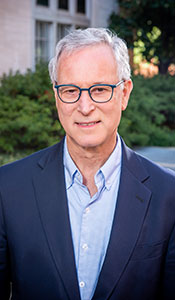Frequently I receive questions, through both e-mails and individuals who are referred to my office, regarding patients who have one isolated feature of NF but do not have a confirmed diagnosis of neurofibromatosis. These isolated features most often occur in the form of either plexiform neurofibromas or optic gliomas, although they sometimes may include dermal neurofibromas or bone dysplasia. It is important to know that isolated features of NF can occasionally been seen in both children and adults who do not actually have the condition. I’d like to give a brief overview of how we evaluate patients with only one isolated feature of NF in the absence of other symptoms and provide some possible explanations of why this phenomenon may occur.
Some individuals develop plexiform neurofibromas – tumors that involve multiple branches of large nerves – in one isolated area of the body, such as the spine, with no other features of NF. The age of presentation varies, but it usually begins from the teenage years into adulthood, as the symptoms of a plexiform neurofibroma do not become apparent until adolescence. Isolated optic gliomas, tumors of the optic nerve, can also occur in children and adults who have no other features of NF. Unlike isolated plexiform neurofibromas, optic gliomas that occur in individuals who do not have NF are typically more aggressive tumors than those found in people who have neurofibromatosis. Some individuals also develop isolated dermal neurofibromas or bone dysplasia in the absence of other NF features and with no confirmed diagnosis of neurofibromatosis.
When we see someone in our clinic with an isolated feature of NF, we provide a comprehensive evaluation to make certain that subtle features of the condition are not present. In some cases, if possible, we obtain a tissue sample of the tumor, although this is often difficult due to the location of tumors, such as plexiform neurofibromas deep inside the body. Sometimes we obtain a blood sample for genetic testing; however, a negative result does not necessarily confirm that an individual does not have NF.
There are at least three possible explanations for the occurrence of isolated NF features in some individuals. The first is mosaicism, caused by a mutation in the NF1 gene that occurs early in embryonic development and that only affects certain cells in the body. As a result, individuals with mosaicism have features of NF1 that are limited to only one part of their body, such as neurofibromas or café-au-lait spots in a certain region. The only method of confirming mosaicism is to biopsy the lesion and do genetic testing on the tissue. A second possible explanation for the occurrence of isolated features of NF is that there could be other, still unknown mechanisms that cause tumors that occur in people with NF to also occur in individuals who do not have the condition.
A third possible explanation is related to the specific “two-hit” genetic mechanism that causes the development of tumors in people with NF1. All persons have two copies of the gene, one inherited from each parent. In individuals with NF1, one copy of the NF1 gene is altered, or mutated, due to either inheriting the mutated gene from a parent, a new mutation that occurs in the egg or sperm prior to conception, or from a mutation that occurs early in embryonic development. This represents the “first-hit” genetic mutation. For a neurofibroma to develop in someone with NF1, a random genetic mutation must occur to the other copy of the NF1 gene in the tissue that will become the neurofibroma, café-au-lait spot, or other lesion; this is referred to as the “second-hit” mutation. Although an extremely rare occurrence, it is also possible for some individuals to acquire two random NF mutations, affecting each inherited copy of the NF1 gene, in a cell that could become a neurofibroma or other lesion. This two-hit mutation – similar to lightning striking twice in the same place – could result in the development of an isolated feature of NF in the absence of other signs of the condition.
On another topic, there are two things to report regarding the UAB NF Program. First, Dr. Ashley Cannon has joined the program as genetic counselor and clinical research coordinator. Dr. Cannon has unique training both as a neuroscientist and genetic counselor; she will be seeing patients with me in clinic and also involved in many of our research studies and clinical trials. Second, we will be hosting our annual NF Symposium this summer on Saturday, August 29. As in the past, the focus will be on educating patients and families about NF and highlighting research progress. We have assembled a group of speakers both from UAB and from the Children’s Tumor Foundation who will participate. If interested in knowing more about the symposium please contact Dr. Cannon at acannon@uab.edu. We look forward to seeing as many families as possible at this event!
Director's Blog
Understanding Possible Explanations for Isolated Features of NF
- Details
- Written by: Bruce Korf
